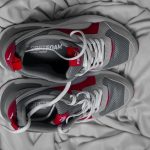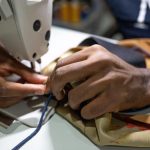Imagine you just bought a high-quality wicking shirt that promised to keep you dry during intense workouts, but after a few washes, it loses its effectiveness and starts to smell. You might wonder if you’re doing something wrong. Caring for this specialized gear isn’t always intuitive, and small mistakes can shorten its lifespan. Understanding the dos and don’ts can help you maintain your gear’s performance much longer.
Table of Contents
Key Takeaways
- Do wash wicking gear in cold or lukewarm water using mild detergent, avoiding fabric softeners to preserve moisture-wicking properties.
- Don’t use high heat when drying; always air dry in a well-ventilated area away from direct sunlight to maintain fabric integrity.
- Do inspect gear regularly for tears, thinning, or loss of elasticity to catch wear early and decide on replacement if needed.
- Don’t wash wicking clothes with rough fabrics to prevent pilling and damage to the synthetic fibers.
- Do store clean, dry gear in breathable containers or mesh bags in a cool, dry place to prevent moisture buildup and odors.
Understanding Wicking Athletic Gear Materials
How do wicking athletic gear materials keep you dry during intense workouts? It all comes down to their material composition designed for effective moisture management.
These fabrics typically blend synthetic fibers like polyester or nylon, which pull sweat away from your skin and spread it across the fabric’s surface. This quick evaporation process prevents moisture buildup, helping you stay comfortable and dry.
Unlike cotton, which soaks up sweat and holds it close, wicking materials keep you feeling fresh by managing moisture efficiently.
When you understand the science behind these fabrics, you’ll appreciate why proper care matters. Maintaining the integrity of the material composition guarantees your gear continues to wick moisture effectively, enhancing your performance and comfort every time you wear it.
Proper Daily Maintenance Habits
Because wicking athletic gear relies on its material properties to manage moisture, you need to treat it with care every day to maintain its effectiveness.
Start with a daily inspection—check for tears, loose threads, or lingering odors that could indicate bacteria buildup. Catching issues early prevents damage and keeps your gear performing well.
After each use, hang your gear to air out and dry completely before storing. This simple habit reduces moisture retention and odor.
While routine washing is essential, daily maintenance like removing sweat promptly and avoiding prolonged dampness helps preserve fabric integrity.
By combining daily inspection with proper airing, you extend your gear’s lifespan and keep it ready for your next workout.
Consistent care guarantees your wicking gear stays fresh and functional longer.
Best Practices for Washing Wicking Gear
Although wicking athletic gear is designed to handle moisture, you need to wash it properly to maintain its moisture-wicking abilities and prevent fabric damage.
Always use cold or lukewarm washing temperatures to avoid breaking down the fabric’s fibers. Hot water might seem like a good idea for cleanliness, but it can degrade the material and reduce its effectiveness.
Use cold or lukewarm water to preserve fabric fibers and maintain your gear’s effectiveness.
When setting your washer, choose a gentle cycle with low spin cycles to minimize stretching and wear. High spin speeds can damage the fabric and cause it to lose shape.
Also, turn your gear inside out to protect the outer layer. Avoid washing your wicking gear with rough fabrics to prevent pilling.
Following these steps keeps your gear performing well and lasting longer.
Choosing the Right Detergents and Avoiding Fabric Softeners
When selecting detergents for your wicking athletic gear, you’ll want to pick ones that are free of harsh chemicals and fragrances, as these can clog the fabric’s pores and reduce its moisture-wicking ability. Avoid fabric softeners—they coat fibers and block breathability. Instead, opt for fabric softener alternatives like white vinegar or baking soda, which maintain fabric performance without residue. Understanding detergent types helps you choose wisely:
| Detergent Types | Suitable For |
|---|---|
| Mild liquid detergent | Safe for wicking fabrics |
| Detergents without enzymes | Prevent fabric damage |
| Fragrance-free detergent | Avoids pore clogging |
| Powder detergent | May leave residue, use sparingly |
| Detergent pods | Convenient but check ingredients |
Stick to gentle, fragrance-free detergent types and skip fabric softeners to keep your gear performing at its best.
Effective Spot Cleaning Techniques
When spot cleaning your wicking gear, use a gentle detergent to protect the fabric’s performance.
You can also try a vinegar solution to break down odors and stains without harsh chemicals.
Just remember to rinse thoroughly to remove any residue and keep your gear fresh.
Gentle Detergent Use
Since wicking athletic gear requires special care, you’ll want to use a gentle detergent that won’t damage the fabric’s performance. Choosing gentle detergent options, especially eco friendly detergents, helps preserve the moisture-wicking ability and keeps your gear fresh without harsh chemicals. Avoid bleach or fabric softeners as they can clog the fabric’s pores.
Here’s a quick guide to detergent choices:
| Detergent Type | Best For |
|---|---|
| Mild Liquid Detergent | Regular wash, safe for most wicking fabrics |
| Eco Friendly Detergents | Sensitive skin, environment-conscious users |
| Specialized Sports Detergents | Removing odors, maintaining fabric integrity |
Using the right detergent guarantees your gear stays durable and effective, so always opt for gentle, eco-friendly options to extend the life of your athletic wear.
Vinegar Solution Benefits
Choosing the right detergent is just one part of keeping your wicking athletic gear in top shape.
For effective spot cleaning, using a vinegar solution offers powerful vinegar benefits that you shouldn’t overlook. Vinegar naturally breaks down sweat and grime, making it ideal for tackling stubborn stains without damaging the fabric.
It also excels at odor removal, neutralizing lingering smells that detergents alone might miss. Simply mix one part white vinegar with four parts water, apply it directly to the affected areas, and let it sit for 10-15 minutes before washing as usual.
This method helps maintain your gear’s freshness and performance. Incorporating vinegar spot treatments into your routine guarantees your athletic wear stays clean and odor-free longer, extending its life without harsh chemicals.
Thorough Rinse Importance
Although spot cleaning removes much of the grime and odor from your athletic gear, you’ll need to give your clothes a thorough rinse to flush out any remaining residues.
The thorough rinse benefits include preventing buildup that can degrade fabric performance and cause lingering smells. To maximize these benefits, use rinse techniques like running cold water through the fabric or soaking the garment briefly before a final wash.
Avoid hot water, which can set stains and damage fibers. You can also gently agitate the gear during rinsing to dislodge trapped dirt and detergent.
Air Drying and Storage Tips to Prevent Damage
When you finish washing your wicking athletic gear, air drying it properly helps maintain its fabric integrity and performance.
Avoid using a dryer, as high heat can break down fibers and reduce the garment’s moisture-wicking ability. Instead, hang your gear in a well-ventilated area away from direct sunlight to prevent fading and fabric damage. Make sure the pieces are spread out to allow complete airflow.
Once dry, store your gear in breathable storage containers or mesh bags to prevent moisture buildup and mildew.
Avoid airtight containers, as trapped humidity can harm the fabric and cause odors. Keeping your wicking gear clean, dry, and stored correctly will extend its lifespan and keep it working effectively, so you can rely on it during every workout.
How to Handle Stubborn Odors and Stains
Dealing with stubborn odors and stains on your wicking athletic gear requires prompt and targeted action.
Start by rinsing the affected area with cold water to prevent setting stains. Use specialized stain removal methods like applying a mixture of baking soda and water or a mild detergent directly to the stain before washing.
For odor elimination techniques, soak your gear in a solution of white vinegar and water for 30 minutes to neutralize lingering smells.
Avoid using fabric softeners, as they can trap odors and reduce moisture-wicking ability.
Always wash your gear in cold water with a gentle cycle to preserve fabric integrity.
Inspecting and Maintaining Gear Quality
To keep your wicking athletic gear performing at its best, you need to inspect and maintain it regularly. Routine gear inspection helps catch wear and tear early, preventing damage that compromises moisture-wicking abilities.
Conduct a quality assessment by checking seams, fabric integrity, and elasticity.
- Examine seams for loose threads or fraying that may cause further unraveling.
- Assess fabric for thinning spots or pilling which reduce breathability and wick function.
- Test elasticity by stretching areas like cuffs and waistbands to guarantee they bounce back without distortion.
When and How to Replace Wicking Athletic Gear
How do you know it’s time to replace your wicking athletic gear? Pay attention to replacement indicators like persistent odor, loss of stretch, thinning fabric, or reduced moisture-wicking ability.
These signs often mean your gear has surpassed its ideal performance, signaling the end of its effective gear lifespan. Don’t wait until discomfort or skin irritation occurs—address these cues early.
When replacing, choose gear with updated fabric technology to enhance comfort and durability. Dispose of old gear responsibly, considering recycling options.
Preparing Your Gear for Seasonal Storage
Although you might be keen to put your wicking athletic gear away for the season, proper preparation is key to preserving its performance and longevity.
Seasonal considerations mean you should clean and dry your gear thoroughly before storage to prevent mold and odors. Using the right storage techniques keeps your gear in top shape during downtime.
Follow these steps for effective seasonal storage:
- Wash with a gentle detergent and air-dry completely to avoid moisture buildup.
- Store your gear in a cool, dry place away from direct sunlight to prevent fabric degradation.
- Use breathable storage bags or containers to maintain airflow and reduce the risk of mildew.
Frequently Asked Questions
Can Wicking Gear Be Safely Ironed or Steamed to Remove Wrinkles?
You shouldn’t iron wicking gear directly because heat can damage it. Instead, use low-heat ironing techniques with a cloth barrier or opt for steaming alternatives, which gently remove wrinkles without risking fabric integrity or performance.
Is It Okay to Wear Wicking Gear in the Rain or Wet Conditions?
You can wear wicking gear in wet weather since it offers decent rain protection by drying quickly. However, it’s not fully waterproof, so layer up with a rain jacket to stay comfortable during heavy rain or prolonged exposure.
How Do Different Types of Exercise Affect the Lifespan of Wicking Gear?
Higher exercise intensity wears down your wicking gear faster, reducing fabric durability. Low-impact workouts are gentler, helping your gear last longer. So, you should match your gear to your exercise intensity to extend its lifespan.
Can Wicking Gear Be Used for Non-Athletic Daily Wear Without Damage?
Don’t judge a book by its cover—wicking gear works great for casual wear and everyday comfort. You can wear it daily without damage, as long as you avoid harsh washing and rough activities that cause wear and tear.
Are There Any Supplements or Sprays That Enhance the Moisture-Wicking Ability?
You can try moisture enhancing sprays designed to boost wicking performance, but be cautious. Some fabric treatment options may alter breathability or durability, so always test on a small area and follow product instructions carefully for best results.
- How to Weave Your Own Abaca Fiber Placemats - June 25, 2025
- Creating Stunning Paper Casts With Abaca Fiber Pulp - June 25, 2025
- Crafting With Abaca: 5 Easy Projects to Get You Started - June 25, 2025







